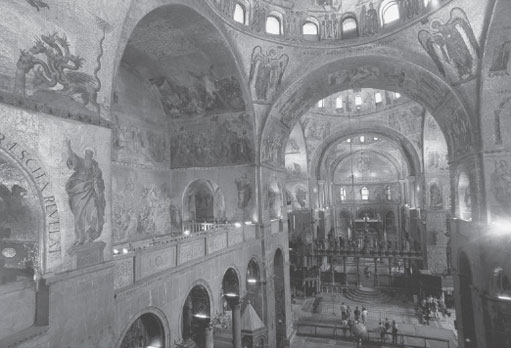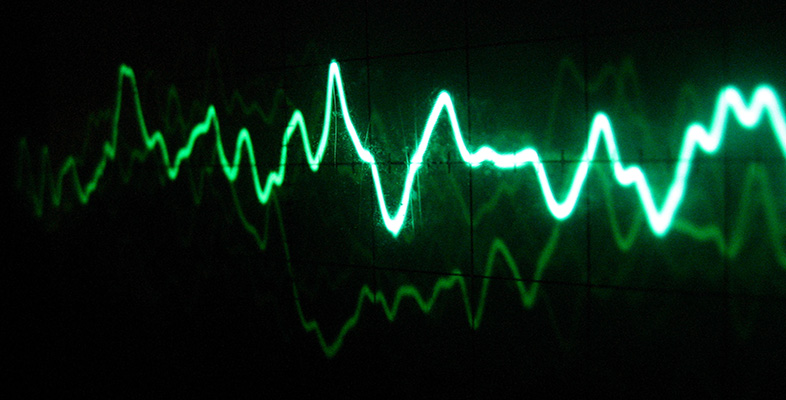4 The speed of sound
4.1 The experimental result
One way to establish the speed of sound is to measure it experimentally. That is, one measures how long the sound takes to travel a known distance, and from this works out the speed. The answer turns out to depend somewhat on the prevailing temperature and humidity. At an air temperature of 14 °C the speed is 340 metres per second and at about 22.5 °C it is 345 metres per second. That is a change of speed of less than 1.5 per cent for an appreciable change of temperature. To a reasonable approximation, therefore, we can regard the speed of sound in air as constant, and a value of 340 metres per second is a good general-purpose approximation to use. You do not need to memorise this number.
Although the speed of sound is fast by everyday standards, it is far from instantaneous. Light, for instance, travels much faster, which is why a flash of distant lightning is always seen before the arrival of the associated thunderclap.
For performers in large spaces the finite speed of sound can have practical implications. For instance, in a cathedral or large church, the reflected sound can arrive back at the performers after a perceptible delay, which can be confusing for them. Also, for spatially distributed groups of performers in antiphonal music (see Box 2), there can be synchronisation problems.
Box 2: Antiphonal music and the speed of sound

At St Mark's Cathedral in Venice (Figure 12) there developed a tradition of performance with groups of performers located in different galleries of the building. Compositions by Andrea Gabrieli (1532/3–1585) and his nephew Giovanni Gabrieli (1554–1612) were specially written to exploit these spatial effects. This type of composition, where performers are grouped in spatially distributed ensembles, is known as antiphonal. The problem of synchronisation suggests that the performers in this kind of music may not have been as widely separated as has often been claimed, as the following indicates:
‘The amount of spatial separation between the choirs of instruments and voices used by composers such as Giovanni Gabrieli has often been overstated. Vocal polychoral pieces a due cori [for two choirs] were generally performed with no spatial separation of the performing forces, but with a division between soloists and ripieno [the rest of the performers]; the total number of singers could be as few as 12. Some of the most extravagant late 16th-century performances saw one group in each of the organ lofts, situated on either side of the altar, and a third group on a specially built temporary stage on the main floor of the church, not far from the main altar.’
Activity 13 (Self-Assessment)
Suppose two groups of performers, A and B, are 34 metres apart. Group B synchronises itself to the sounds it hears from Group A.
To the members of Group A, does Group B appear to be synchronised with Group A? If not, what is the apparent discrepancy (in seconds)? Take the speed of sound to be 340 metres per second.
Answer
To members of Group A, Group B appears to be lagging by 0.2 second. It takes 0.1 second for the sound to travel 34 metres from A to B at a speed of 340 metres per second, and a further 0.1 second for the sound to travel from B back to A. This makes a total delay of 0.2 second for the round trip.
A delay of 0.2 second, as in the last activity, is not insignificant, as you can hear in the following activity.
Activity 14 (Listening)
Listen to the audio track below. The audio begins on one of the stereo channels. After a few seconds, you will hear a duplicated version of the audio enter on the other channel, but this version is delayed by 0.2 second relative to the first.
Click 'Play' to listen to Audio Clip
One way to bring two spatially separated groups of performers into synchrony is to have them take their cue from a conductor placed midway between them. To the conductor and to listeners midway between the groups, the performers will be synchronised. To each of groups A and B, however, the other group appears to lag.
Activity 15 (Listening)
Now listen to the sample of the music of Giovanni Gabrieli. It is his Canzona No. 13 from the Sacrae Symphoniae of 1597.
Click 'Play' to listen to Audio Clip
